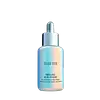What's inside
What's inside
 Key Ingredients
Key Ingredients

 Benefits
Benefits

 Concerns
Concerns

 Ingredients Side-by-side
Ingredients Side-by-side

Water
Skin ConditioningButylene Glycol
HumectantPentylene Glycol
Skin ConditioningPropanediol
SolventGlycerin
HumectantHexylene Glycol
EmulsifyingPhenoxyethanol
PreservativeCarbomer
Emulsion StabilisingAcetamide Mea
HumectantPhyllanthus Emblica Fruit Extract
HumectantNiacinamide
SmoothingAminomethyl Propanol
BufferingKappaphycus Alvarezii Extract
Skin ConditioningPanthenol
Skin ConditioningCaffeine
Skin ConditioningEthylhexylglycerin
Skin ConditioningArginine
MaskingLactic Acid
BufferingAmaranthus Caudatus Seed Extract
Skin ConditioningDisodium EDTA
Pinus Pinaster Bark Extract
AntioxidantGlycine Soja Germ Extract
EmollientTriticum Vulgare Germ Extract
Skin ConditioningSea Water
HumectantSodium Benzoate
MaskingGluconolactone
Skin ConditioningHydrolyzed Rice Protein
Skin ConditioningScutellaria Baicalensis Root Extract
AstringentPPG-26-Buteth-26
Skin Conditioning1,2-Hexanediol
Skin ConditioningSerenoa Serrulata Fruit Extract
Skin ConditioningPEG-40 Hydrogenated Castor Oil
EmulsifyingSh-Polypeptide-123
Skin ProtectingPotassium Sorbate
PreservativeHydrolyzed Yeast Protein
Skin ConditioningApigenin
AntioxidantCalcium Gluconate
HumectantOleanolic Acid
Skin ConditioningBiotinoyl Tripeptide-1
Water, Butylene Glycol, Pentylene Glycol, Propanediol, Glycerin, Hexylene Glycol, Phenoxyethanol, Carbomer, Acetamide Mea, Phyllanthus Emblica Fruit Extract, Niacinamide, Aminomethyl Propanol, Kappaphycus Alvarezii Extract, Panthenol, Caffeine, Ethylhexylglycerin, Arginine, Lactic Acid, Amaranthus Caudatus Seed Extract, Disodium EDTA, Pinus Pinaster Bark Extract, Glycine Soja Germ Extract, Triticum Vulgare Germ Extract, Sea Water, Sodium Benzoate, Gluconolactone, Hydrolyzed Rice Protein, Scutellaria Baicalensis Root Extract, PPG-26-Buteth-26, 1,2-Hexanediol, Serenoa Serrulata Fruit Extract, PEG-40 Hydrogenated Castor Oil, Sh-Polypeptide-123, Potassium Sorbate, Hydrolyzed Yeast Protein, Apigenin, Calcium Gluconate, Oleanolic Acid, Biotinoyl Tripeptide-1
Water
Skin ConditioningPolysorbate 20
EmulsifyingButylene Glycol
HumectantGlycerin
HumectantPolyquaternium-7
Rhodiola Rosea Extract
EmollientSodium Hyaluronate
HumectantTocopheryl Acetate
AntioxidantAcetyl Tetrapeptide-3
Skin ProtectingTocopherol
AntioxidantRosa Centifolia Flower Extract
AstringentDextran
Trifolium Pratense Flower Extract
AstringentAcanthopanax Senticosus Root Extract
Skin ConditioningRhaponticum Carthamoides Root Extract
Skin ConditioningInonotus Obliquus Extract
Skin ConditioningSelaginella Lepidophylla Extract
EmollientEthylhexylglycerin
Skin ConditioningDisodium EDTA
Sodium Hydroxide
BufferingAcrylates/C10-30 Alkyl Acrylate Crosspolymer
Emulsion StabilisingCitric Acid
BufferingSodium Benzoate
MaskingPhenoxyethanol
PreservativeParfum
MaskingEugenol
PerfumingLimonene
PerfumingLinalool
PerfumingWater, Polysorbate 20, Butylene Glycol, Glycerin, Polyquaternium-7, Rhodiola Rosea Extract, Sodium Hyaluronate, Tocopheryl Acetate, Acetyl Tetrapeptide-3, Tocopherol, Rosa Centifolia Flower Extract, Dextran, Trifolium Pratense Flower Extract, Acanthopanax Senticosus Root Extract, Rhaponticum Carthamoides Root Extract, Inonotus Obliquus Extract, Selaginella Lepidophylla Extract, Ethylhexylglycerin, Disodium EDTA, Sodium Hydroxide, Acrylates/C10-30 Alkyl Acrylate Crosspolymer, Citric Acid, Sodium Benzoate, Phenoxyethanol, Parfum, Eugenol, Limonene, Linalool
Ingredients Explained
These ingredients are found in both products.
Ingredients higher up in an ingredient list are typically present in a larger amount.
Butylene Glycol (or BG) is used within cosmetic products for a few different reasons:
Overall, Butylene Glycol is a safe and well-rounded ingredient that works well with other ingredients.
Though this ingredient works well with most skin types, some people with sensitive skin may experience a reaction such as allergic rashes, closed comedones, or itchiness.
Learn more about Butylene GlycolDisodium EDTA plays a role in making products more stable by aiding other preservatives.
It is a chelating agent, meaning it neutralizes metal ions that may be found in a product.
Disodium EDTA is a salt of edetic acid and is found to be safe in cosmetic ingredients.
Learn more about Disodium EDTAEthylhexylglycerin (we can't pronounce this either) is commonly used as a preservative and skin softener. It is derived from glyceryl.
You might see Ethylhexylglycerin often paired with other preservatives such as phenoxyethanol. Ethylhexylglycerin has been found to increase the effectiveness of these other preservatives.
Glycerin is already naturally found in your skin. It helps moisturize and protect your skin.
A study from 2016 found glycerin to be more effective as a humectant than AHAs and hyaluronic acid.
As a humectant, it helps the skin stay hydrated by pulling moisture to your skin. The low molecular weight of glycerin allows it to pull moisture into the deeper layers of your skin.
Hydrated skin improves your skin barrier; Your skin barrier helps protect against irritants and bacteria.
Glycerin has also been found to have antimicrobial and antiviral properties. Due to these properties, glycerin is often used in wound and burn treatments.
In cosmetics, glycerin is usually derived from plants such as soybean or palm. However, it can also be sourced from animals, such as tallow or animal fat.
This ingredient is organic, colorless, odorless, and non-toxic.
Glycerin is the name for this ingredient in American English. British English uses Glycerol/Glycerine.
Learn more about GlycerinPhenoxyethanol is a preservative that has germicide, antimicrobial, and aromatic properties. Studies show that phenoxyethanol can prevent microbial growth. By itself, it has a scent that is similar to that of a rose.
It's often used in formulations along with Caprylyl Glycol to preserve the shelf life of products.
Sodium Benzoate is a preservative. It's used in both cosmetic and food products to inhibit the growth of mold and bacteria. It is typically produced synthetically.
Both the US FDA and EU Health Committee have approved the use of sodium benzoate. In the US, levels of 0.1% (of the total product) are allowed.
Sodium benzoate works as a preservative by inhibiting the growth of bacteria inside of cells. It prevents the cell from fermenting a type of sugar using an enzyme called phosphofructokinase.
It is the salt of benzoic acid. Foods containing sodium benzoate include soda, salad dressings, condiments, fruit juices, wines, and snack foods.
Studies for using ascorbic acid and sodium benzoate in cosmetics are lacking, especially in skincare routines with multiple steps.
We always recommend speaking with a professional, such as a dermatologist, if you have any concerns.
Learn more about Sodium BenzoateWater. It's the most common cosmetic ingredient of all. You'll usually see it at the top of ingredient lists, meaning that it makes up the largest part of the product.
So why is it so popular? Water most often acts as a solvent - this means that it helps dissolve other ingredients into the formulation.
You'll also recognize water as that liquid we all need to stay alive. If you see this, drink a glass of water. Stay hydrated!
Learn more about Water